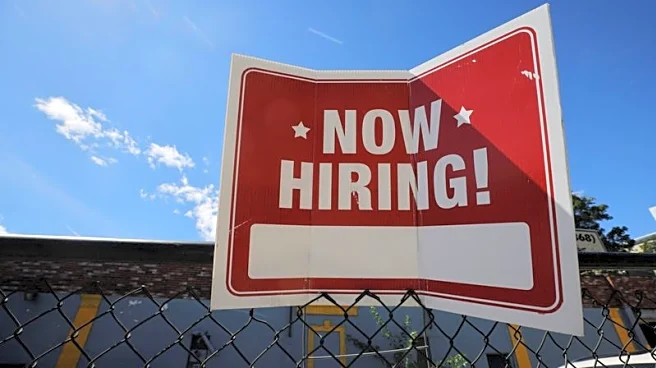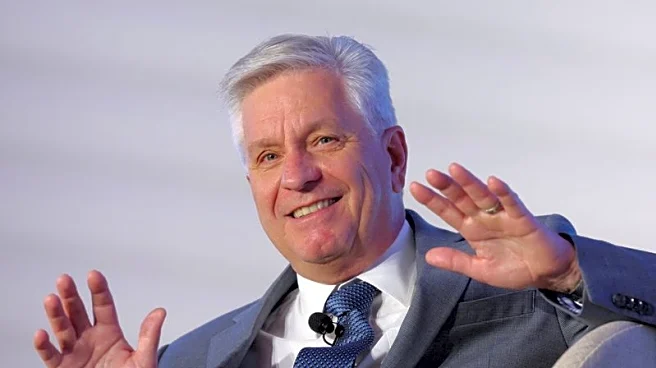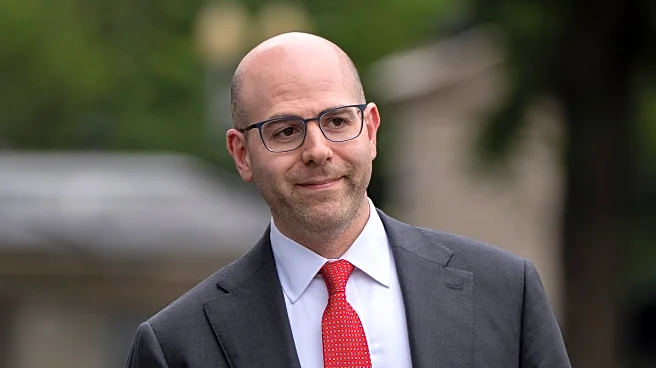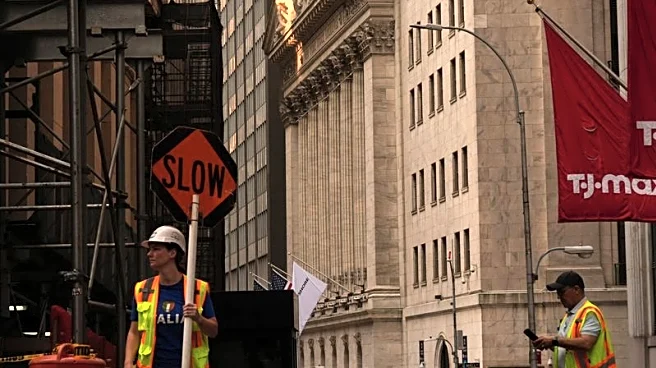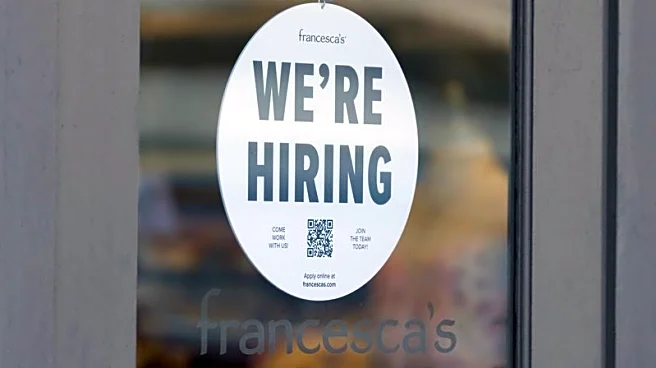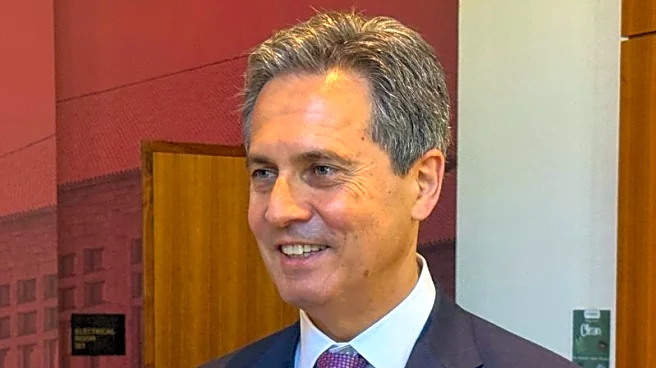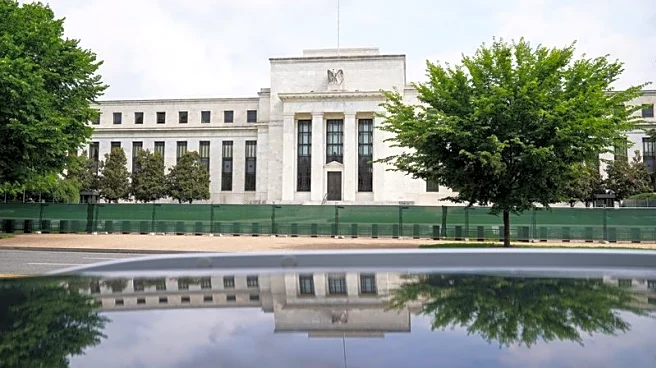What's Happening?
The August jobs report has raised concerns among economists due to disappointing hiring figures. Employers added only 22,000 nonfarm jobs, significantly below expectations, while the unemployment rate increased to 4.3%. The job market's slowdown is attributed to factors such as tariffs and the adoption of artificial intelligence. President Trump criticized Federal Reserve Chair Jerome Powell for not cutting interest rates sooner, suggesting that lower borrowing costs could stimulate job growth. Economists anticipate the Fed will cut rates in September, with discussions on whether the reduction will be 0.25 or 0.50 percentage points.
Why It's Important?
The weak job growth signals potential challenges for the U.S. economy, including the risk of stagflation—a combination of high inflation and weak growth. The Fed's anticipated rate cuts aim to address these issues by lowering borrowing costs, which could boost consumer spending and business expansion. However, the effectiveness of these measures in reviving the job market remains uncertain. The Trump administration's trade policies and economic strategies are under scrutiny, as they impact business planning and hiring decisions. The Fed's actions will be pivotal in shaping economic conditions and influencing market confidence.
What's Next?
The Federal Reserve's upcoming meeting on September 17 will be critical in determining the rate cut magnitude. Economists and market participants are closely watching the Fed's decision, which could range from a standard 0.25 percentage point cut to a more aggressive 0.50 percentage point reduction. The Fed's approach to rate cuts throughout 2025 will depend on labor market trends and inflation data. Businesses and investors will adjust their strategies based on the Fed's actions, impacting economic growth and market dynamics.


